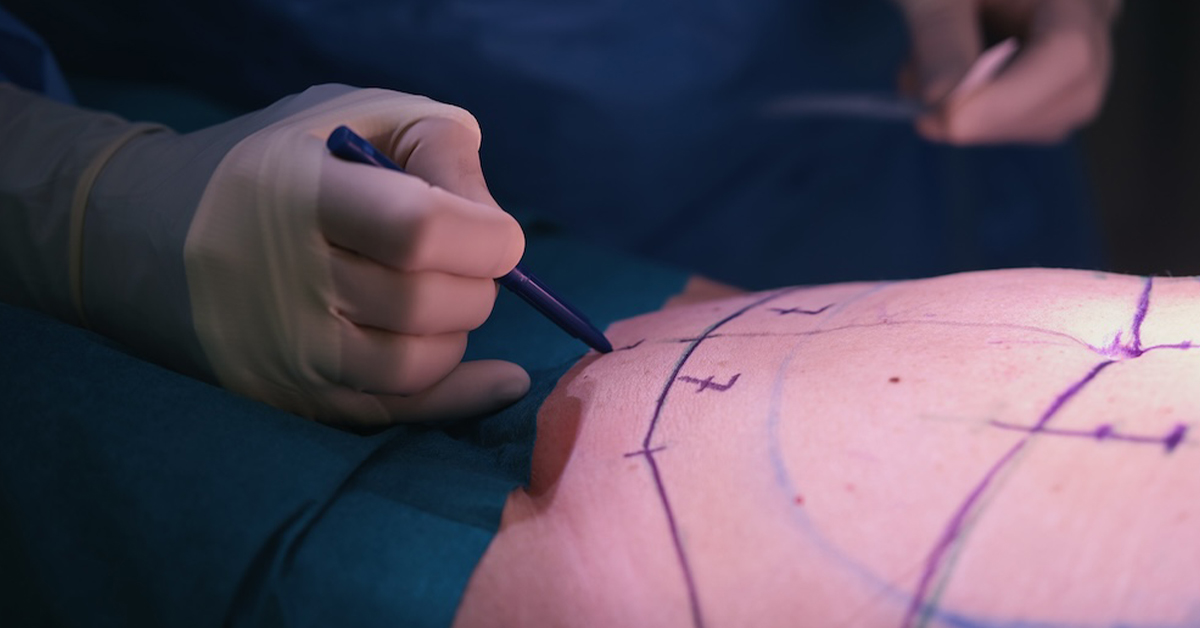Breast Expansion Surgery: Methods, Risks, and Results
Are you considering breast expansion surgery? Also known as augmentation mammoplasty, breast expansion surgery involves the surgical placement of breast implants to enhance your appearance and boost self-confidence. With a variety of implants, placement options, and surgical techniques, it’s vital to understand the procedure and weigh the potential risks and outcomes before making a decision. In this comprehensive guide, you’ll learn about different breast enlargement methods, the potential risks associated with cosmetic breast surgery, and the post-surgery care required to achieve optimal results.
- Breast expansion surgery, or augmentation mammoplasty, involves the placement of breast implants to increase breast size.
- There are various implant options, including saline or silicone, and differing surgical techniques to suit individual preferences and needs.
- Potential risks of breast enlargement include capsular contracture, infection, and implant rupture, among others.
- Pre-surgery preparation and postoperative care are essential for a successful breast augmentation experience and for minimizing potential complications.
- Achieving satisfactory results requires realistic expectations, open communication with your surgeon, and adherence to lifelong care and monitoring guidelines.
Understanding Breast Expansion Surgery: A Comprehensive Guide
When considering breast expansion surgery, it is crucial to have an informative breast augmentation consultation with a plastic surgeon to understand the intricacies of the surgery. This includes discussing the various breast surgery techniques and the available options in implant shape, size, texture, and material.
Comprehensive patient consultations are necessary to ensure a clear understanding of surgical expectations, potential benefits, risks, and complications.
Your selected cosmetic surgery clinic should provide detailed information and consent forms during the consultation to ensure you fully comprehend the potential benefits and are aware of the risks and possible complications associated with breast expansion surgery.
| Key Aspects to Discuss during Consultation | Significance |
|---|---|
| Anesthesia risks | Understanding the potential side effects and complications related to anesthesia will help in making well-informed decisions. |
| Breast implant-associated illnesses | Being aware of breast implant-associated anaplastic large cell lymphoma (ALCL) and breast implant illness (BII) is crucial before proceeding with the surgery. |
| Implant options | Determining the implant type that best suits your needs can impact the overall results and satisfaction with the surgery. |
| Surgical approaches | Familiarizing yourself with different surgical techniques can help you and your surgeon agree on the best approach considering your unique needs and preferences. |
Adequate preparation before surgery is a vital part of the breast augmentation process. This involves several steps, including:
- Obtaining a baseline mammogram.
- Considering possible changes to medication schedules.
- Smoking cessation.
- Postoperative planning, such as arranging for assistance and transportation.
By following these steps and ensuring that you are well-informed and prepared, you will be better equipped to make decisions about your breast expansion surgery and able to navigate the overall process with confidence.
The Various Techniques of Breast Augmentation
There are multiple methods and techniques available for breast augmentation, providing patients with a tailored approach to achieve their desired results. Factors to consider include implant placement, type of implant, and incision location. This section will explore the options for submuscular versus subglandular implant placement, compare silicone and saline implants, and delve into the various incision methods.
Submuscular versus Subglandular Implant Placement
One of the critical decisions in breast surgery techniques is choosing between submuscular and subglandular implant placement. Submuscular implant placement positions the prosthetic breast behind the chest wall muscle, while subglandular placement places the implant behind the glandular tissue in the breast.
The choice of placement affects the post-surgery appearance of the breast, as well as the likelihood of certain complications. For example, submuscular placement may provide a more natural-looking result but may require a longer recovery period due to the surgical manipulation of the chest muscles. Subglandular placement, on the other hand, has a shorter recovery time but may be more prone to visible rippling and complications, such as capsular contracture.
Comparing Silicone and Saline Implants
Another essential consideration in breast augmentation is the type of implant used. The two most common options are silicone and saline implants. Silicone implants are pre-filled with silicone gel, which is thicker than saline and tends to provide a more natural feel. However, silicone implants require larger incisions.
Saline implants, on the other hand, consist of a silicone shell filled with sterile salt water after it has been inserted into the breast pocket created by the surgeon. Saline implants can be adjusted more easily in size during surgery, and if ruptured, the saline is safely absorbed by the body. Nonetheless, they may not provide as natural a feel as silicone implants.
Incision Methods: Inframammary, Axillary, and Periareolar
Finally, the placement of incisions during breast augmentation is another important factor to discuss with your surgeon. The three primary methods are inframammary, axillary, and periareolar incisions. Each approach has its advantages and disadvantages.
- Inframammary incision: Created in the crease under the breast, this technique offers direct access for implant placement, with minimal visibility of scars post-surgery. However, the incision may be more significant, especially for silicone implants.
- Axillary incision: Made under the arm, this incision avoids scarring on the breast itself, but may affect the placement of the implant and potentially impact nerve function in the arm and chest.
- Periareolar incision: Performed around the nipple, the periareolar incision provides a well-concealed scar and allows for precise placement of the implant. However, this method may increase the risk of nipple sensation changes and impact breastfeeding capabilities.
Talking to your surgeon about your specific needs and goals will enable you to make an informed decision on the best breast surgery techniques for your unique situation, including implant placement, type, and incision location.
Potential Risks and Complications of Breast Enhancement Surgery
When considering breast enhancement surgery, it is crucial to understand the potential risks and complications associated with the procedure. These can range from general anesthesia risks to specific breast implant-associated risks, such as capsular contracture, BIA-ALCL, and breast implant illness.
- capsular contracture: This condition can lead to the hardening of the breast around the implant, causing pain and discomfort. Capsular contracture can require additional surgeries for correction.
- BIA-ALCL: Breast Implant-Associated Anaplastic Large Cell Lymphoma (BIA-ALCL) is an extremely rare cancer of the immune system linked to certain types of breast implants. It requires prompt treatment, including the surgical removal of implants and surrounding tissues.
- breast implant illness (BII): Some patients report a variety of systemic symptoms they attribute to their breast implants, known as breast implant illness. These symptoms may resolve upon removal of the implants, although no specific cause has been identified, and research is ongoing.
Furthermore, there are other complications associated with breast implants, such as implant leakage or rupture and challenges with mammography due to implant interference. Implant leakage or rupture may require additional surgeries for correction to prevent potential health issues. It is essential to have ongoing follow-up and screening, as recommended by the FDA, to detect and address any complications associated with the implants.
“Patients should be aware of the potential risks and complications associated with breast enhancement surgery, and discuss their concerns with their plastic surgeon to make an informed decision.”
One significant consideration for breast enhancement surgery is the financial aspect, as most health insurance plans do not cover cosmetic breast surgery. As a result, patients need to prepare for the initial cost as well as the potential future expenses related to complications, additional surgeries, or implant maintenance. Below is a table outlining typical costs associated with breast enhancement surgery.
| Expense | Average Cost (USD) |
|---|---|
| Initial breast augmentation | $3,000 to $10,000 |
| Implant removal or revision | $2,000 to $7,000 |
| Follow-up appointments | Varies depending on frequency and provider |
| Routine implant screening (MRI or ultrasound) | $500 to $2,000 |
In conclusion, it is essential to have a thorough understanding of the potential risks and complications of breast enhancement surgery, including breast surgery complications, capsular contracture, BIA-ALCL, implant leakage, breast implant illness, surgery financing, and health insurance coverage. Discussing these concerns with a knowledgeable plastic surgeon will allow you to make an informed decision about whether this procedure is right for you.
What to Expect: The Consultation and Decision-Making Process
As you embark on your breast augmentation journey, it is essential to understand the nuances of the consultation and decision-making process to ensure a successful outcome.
Setting Realistic Expectations for Breast Size Increase
During the initial consultation with your plastic surgeon, it is crucial to have an honest and open discussion about your expectations regarding the increase in breast size. Body image plays a significant role in patient satisfaction, and it is vital to understand that breast implants do not prevent sagging, may require future surgeries, and will not last a lifetime. It is essential to acknowledge that your breast appearance may change due to factors such as weight fluctuation or aging, even after surgery.
Discussing Breast Asymmetry Correction with Your Surgeon
If you seek breast expansion to address natural asymmetries or unevenness that resulted from previous breast surgeries, it is important to express these concerns to your surgeon. This allows the surgeon to plan the procedure accordingly, ensuring the desired aesthetic outcomes and properly addressing asymmetries.
According to the American Society of Plastic Surgeons, breast asymmetry correction is one of the most common concerns surrounding breast augmentation surgery.
Understanding FDA Approvals for Implants
Being well-informed about the FDA’s approvals and recommendations for breast implants contributes significantly to the decision-making process. This includes knowledge of the FDA’s recent actions to strengthen safety communications, such as the introduction of a patient decision checklist and updated implant labeling with rupture screening recommendations.
For your future reference, here is a summary of the key components involved:
- Breast size increase expectations.
- Breast asymmetry correction.
- Understanding FDA approvals for implants.
Following these guidelines and considerations will help you make an informed decision about your breast augmentation surgery and improve your overall experience and satisfaction with the results.
Preparing for Surgery: Steps for a Smoother Breast Augmentation Experience
Proper preparation for breast augmentation surgery involves several steps, which can make a smoother surgical experience and minimize the risk of complications. By following your surgeon’s instructions and taking essential preoperative care measures, you can increase the chances of success with your surgery.
Obtaining a baseline mammogram is an essential step in your preparation. This imaging procedure helps your healthcare team identify any existing abnormalities in your breast tissue and provides a comparison point for post-operative care and monitoring.
Another critical aspect of preparing for surgery is smoking cessation. If you smoke, it’s essential to stop at least a few weeks before your surgery and throughout the healing process. Smoking can lead to complications, delayed healing, and a higher risk of infections.
Consult with your surgeon regarding any adjustments to your medications before surgery. Certain drugs, such as aspirin or other blood-thinning medications, may need to be temporarily discontinued to minimize the risk of excessive bleeding during and after surgery.
Before surgery, make sure you have adequately planned for your post-operative needs. This includes coordinating post-surgery assistance from a friend or family member and arranging transportation to and from the cosmetic surgery clinic. Consider having someone stay with you for the first 24 hours after surgery to assist with daily tasks and help monitor your healing progress.
| Steps | Actions to Take |
|---|---|
| Baseline Mammogram | Get a mammogram to identify any existing breast abnormalities and provide a comparison for post-operative monitoring. |
| Smoking Cessation | Stop smoking at least a few weeks before surgery and throughout the healing process. |
| Medication Adjustment | Consult with your surgeon to discuss changes to medications, particularly blood thinners, before your surgery. |
| Post-Surgery Assistance and Transportation | Arrange for a friend or family member to drive you to and from the surgery and assist you during the initial recovery phase. |
Lastly, it’s crucial to be mentally prepared for the anesthesia in surgery and the potential side effects. Discuss any concerns or questions you may have with your surgeon and anesthesiologist, as they can help put your mind at ease before the procedure. Proper preparation and adherence to your surgeon’s guidance are vital for a successful breast augmentation surgery and optimal long-term outcomes.
Postoperative Care and Recovery Following Breast Enlargement Surgery
After undergoing breast enlargement surgery, it is essential to pay close attention to postoperative care for the most comfortable and successful recovery. This includes managing pain and discomfort, navigating the recovery period and downtime, and long-term care and monitoring of breast implants.
Managing Pain and Discomfort Post-Surgery
It is common for patients to experience soreness, swelling, and potential bruising following their surgery. To properly manage pain and discomfort, patients may be prescribed pain medication and advised to wear compression garments for support. It is crucial to follow the surgeon’s guidelines on pain management to ensure a comfortable recovery phase.
Adhering to your surgeon’s postoperative care guidelines can significantly improve your comfort level and recovery experience after breast augmentation surgery.
Navigating Breast Augmentation Recovery and Downtime
The recovery phase for breast augmentation patients involves a staged return to regular and strenuous activities. Most patients can resume work within a few weeks, barring any physically demanding tasks. To minimize complications and scarring, it is essential to pay close attention to the healing process and avoid any sudden or jarring movements.
- Week 1: Focus on rest and avoid lifting anything heavier than five pounds
- Week 2-4: Gradually increase daily activities, while still avoiding strenuous exercise
- Week 4-6: Resume most activities, including light exercise, with surgeon’s approval
- Week 6+: Carefully reintroduce more intense workouts and heavier lifting, as advised by your surgeon
Following this phased approach to recovery can help ensure a smooth and comfortable transition back to normal life, reducing the risk of complications or setbacks.
Long-Term Care and Monitoring of Breast Implants
Long-term care following breast expansion surgery involves regular examinations, adherence to FDA-recommended implant screening schedules via MRI or ultrasound, and monitoring for any changes in breast health or implant condition. Addressing potential complications like rupture or capsular contracture is essential in maintaining optimal breast health.
| Long-term Care Steps | Description |
|---|---|
| Regular Examinations | Visit your plastic surgeon for regular check-ups and physical examinations of your breasts. |
| Medical Imaging | Adhere to FDA-recommended breast implant screening schedules using MRI or ultrasound. |
| Mammography | Notify your mammography technologist of your breast implants to ensure proper imaging techniques are used. |
| Monitoring Changes | Pay attention to any changes in breast health or implant condition and consult your surgeon if concerned. |
By closely following your postoperative care plan and monitoring your breast implants in the long term, you can help ensure a successful breast enlargement surgery outcome and maintain proper breast health for years to come.
Assessing the Results: Breast Shape Improvement and Patient Satisfaction
The ultimate goal of breast expansion surgery is to achieve breast shape improvement and enhance a patient’s overall body image. Satisfactory cosmetic outcomes, including breast volume enhancement and symmetry, often lead to greater patient satisfaction and increased self-esteem. The field of aesthetic medicine works diligently to ensure optimal results for patients undergoing breast augmentation procedures. However, it’s crucial to maintain realistic expectations about the surgical outcome and acknowledge the potential effects of aging and lifestyle changes on the long-term appearance of the breasts.
Several factors contribute to the overall satisfaction of patients who undergo breast augmentation, including:
- Surgeon’s experience and expertise
- Patient’s participation in discussing goals and expectations
- Adherence to preoperative and postoperative care instructions
- Individual physiological factors such as skin elasticity and body proportions
By evaluating the outcomes of previous breast augmentation surgeries and understanding the potential limitations of the procedure, patients can make more informed decisions and set achievable expectations for their surgery.
| Factors | Considerations | Potential Impact on Satisfaction |
|---|---|---|
| Implant Type | Choice between saline and silicone implants | Feel and appearance of the breasts post-surgery |
| Implant Placement | Submuscular or subglandular positioning | Appearance, feel, and potential complications |
| Implant Size | Balance between desired volume increase and natural proportions | Aesthetic outcome and comfort |
| Incision Site | Inframammary, periareolar, or axillary incisions | Scarring and breastfeeding impact |
It’s essential for patients to engage in open communication with their plastic surgeon to discuss their goals, preferences, and concerns. By focusing on these elements and thoughtfully considering the long-term effects of the procedure, both patient and surgeon can work together to achieve improved breast shape and the highest level of patient satisfaction possible.
Conclusion
Breast expansion surgery requires thorough consideration and informed decision-making. By discussing your goals and concerns with a qualified plastic surgeon, you can develop a better understanding of augmentation procedures, including their benefits, risks, and lifetime commitment to postoperative care. This knowledge is vital in achieving your desired cosmetic outcomes and maintaining long-term breast health.
In summary, ensuring success in breast augmentation surgery relies on an informed approach, a strong partnership with your chosen surgeon, and a thorough understanding of expectations. With proper preparation and care, you can make confident decisions about your breast enhancement journey and enjoy satisfaction in your cosmetic outcomes.
Breast Augmentation in Miami, FL
To initiate your Breast Augmentation journey in Miami, it’s essential to schedule a consultation with our team. If you’re interested in learning more about the procedure, call us now at (305) 406-9055 or conveniently schedule a consultation online. Our experienced professionals will guide you through the process and address any concerns you may have.







